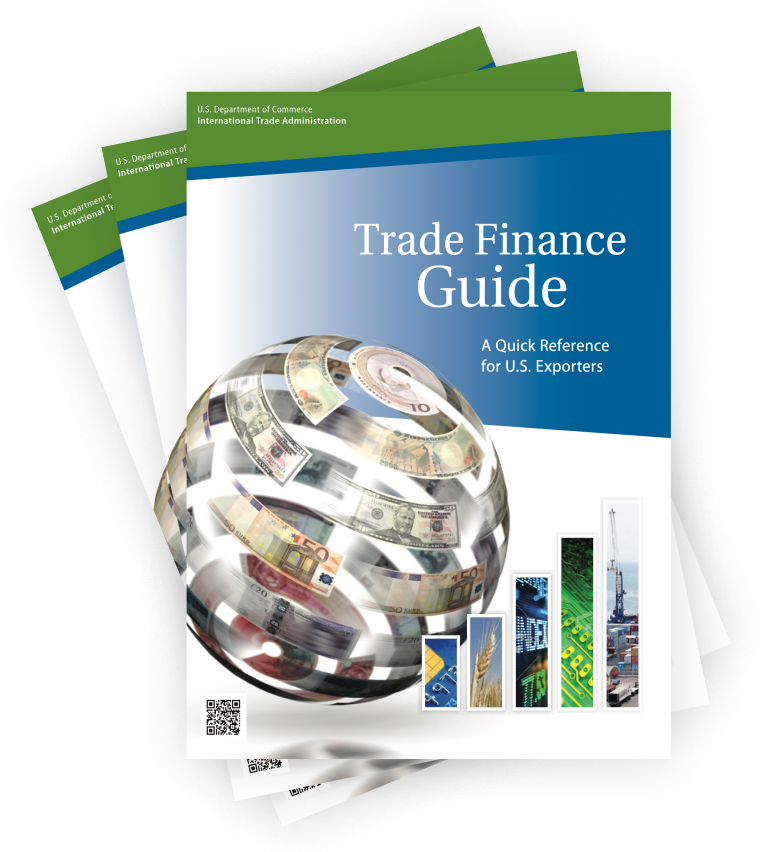The International Trade Blog International Sales & Marketing
7 Common Mistakes When Preparing Letters of Credit
On: March 17, 2021 | By:  David Noah |
5 min. read
David Noah |
5 min. read
 You’ve established that a letter of credit is the best form of payment for your international sale. Now, you must pay special attention to make sure you correctly complete not only the letter of credit, but the entire process.
You’ve established that a letter of credit is the best form of payment for your international sale. Now, you must pay special attention to make sure you correctly complete not only the letter of credit, but the entire process.
We spoke with John A. Novak, former vice president of International Services at Bremer Bank N.A., headquartered in St. Paul, Minn., to learn about the common mistakes exporters make when completing letters of credit. Here’s what he shared:
1. Not understanding the real purpose of a letter of credit.
This is the starting point for avoiding any errors on the document. If you don’t understand the real purpose of a letter of credit, you probably won’t understand how or if you’re meeting its requirements. You may accidentally complicate (or simplify) details.
Solution: Take time to really understand what a letter of credit is, how it works, and what it does. We have more than 70 articles on Passages: the International Trade Blog that address letters of credit issues.
2. Choosing a letter of credit when another method of payment is preferable.
At the beginning of this article, we posited that you have already determined that the letter of credit is the best form of payment for your export. However, according to Novak, it’s crucial to make sure you take the time to actually consider this step. If you’re blindly choosing a letter of credit as your method of payment, you could be making an expensive mistake.
Solution: Make sure you’ve researched all of the options before you settle on complex letters of credit, because there may be a different option that is better suited to your needs—this article talks more about them.
3. Failing to negotiate the terms of a letter of credit during the negotiation of the contract.
If you don’t negotiate all the terms upfront, you’re exposing yourself to potential issues that you may be legally bound to, even if they aren’t in your best interest. This is especially important if you’re working with a sales team that just wants to sell and may not be particularly interested in the details of how they are going to get paid.
Solution: Begin discussing the terms of your letter of credit before it is even received. You can avoid mistakes and ensure a smooth transaction by addressing what you want the letter of credit to say from the outset. You can find out more in our article, International Letters of Credit: Best Practices for Exporters.
4. Not making sure the proforma invoice and contract agree.
If you’re unaware of what has been agreed upon in the eyes of your buyer, or you’re unaware of regulations, you could inadvertently create conflicting documents.
Solution: At the end of the day, if an exporter does his or her homework upfront, and all questions are answered at the beginning of the process, it will result in fewer errors. That’s why negotiating the terms immediately is of huge importance.
There’s no room to guess or assume when creating contracts, the proforma invoice or any export document. You can read more about how to make sure your documents pair seamlessly in our article, If You Must Use a Letter of Credit—Get It Right!
5. Improper review or lack of review of a letter of credit when it is received.
A bank will look at a letter of credit from its own perspective, so sellers need to look at the letter of credit from their perspective. The bank will ensure that everything is consistent on its end, but it is up to the exporter to make sure what they review and approve matches what was discussed in the agreement, proforma invoice or contract. If not, fixing a discrepancy or getting an amendment could take time, which delays your payment.
Solution: Review your letter of credit to make sure it matches what was discussed in the proforma invoice and earlier agreements.
6. Not being able to meet all terms and conditions of the letter of credit.
You need to make sure that when you’re reviewing a letter of credit, you can truly agree to and satisfy the terms and conditions. How do you know what those terms and conditions are?
Solution: Work with your partner in your bank’s international office to make sure the document you’re reviewing is advantageous to you. Many banks offer instructions that can help you review it to make sure you can comply with the terms and conditions.
Also, remember that the checklists your bank provides are only guides, and that due to the individual nature of every transaction, it’s likely your specific letter of credit will be different than anyone else’s letter of credit (or a template). It is your responsibility as the seller to make sure you’re seeking help if and when you have questions about reviewing a letter of credit.
7. Letting someone who is inexperienced prepare the documents under the letter of credit.
You wouldn’t trust just anyone to handle your finances, settle your legal disputes or take care of your family. Why would you hand off the responsibility of your letter of credit to just anyone? You shouldn’t!
Solution: Make sure the person who is preparing the documents under the letter of credit (even if that person is you) has all of the background information and resources available to do this correctly. Here are some things you should consider about who prepares your letter of credit:
- Are they experienced with letters of credit and exporting in general?
- Do you have a plan in place for how these people (or this person) will be trained?
- What standard will they use to prepare documents?
- Are the documents double checked for accuracy after completion?
Every company is different. While multinationals might have a department of experienced people to help generate the documents regarding overseas shipment, small and mid-size businesses might not have resources allocated for these employees. If you do it yourself or even hire a third party for assistance, you must make sure you’re asking questions that can help you guarantee they will do it the right way. (You should also be asking what happens if something goes wrong).
Correctly completing your export documentation isn’t limited only to letters of credit. Every single export form you use should be held to exacting standards of accuracy.
Shipping Solutions software helps exporters reduce the amount of data entry required to complete their export documents, which improves accuracy and expedites the process. Sign up for a free, no-obligation online demo of Shipping Solutions.
What’s the cost of making a mistake on a letter of credit?
Ultimately, the most costly mistake you can make is to not get paid on time for your goods in accordance with the terms and conditions of your letter of credit. Every mistake an exporter makes in a letter of credit could end with this consequence. By taking care to avoid these seven common pitfalls, you’ll eliminate any surprises from your letters of credit and can enjoy smooth sailing on your way to getting paid.
Like what you read? Subscribe today to the International Trade Blog to get the latest news and tips for exporters and importers delivered to your inbox.
This post was originally published in August 2015 and has been updated to include current information, links and formatting.

About the Author: David Noah
As president of Shipping Solutions, I've helped thousands of exporters more efficiently create accurate export documents and stay compliant with import-export regulations. Our Shipping Solutions software eliminates redundant data entry, which allows you to create your export paperwork up to five-times faster than using templates and reduces the chances of making the types of errors that could slow down your shipments and make it more difficult to get paid. I frequently write and speak on export documentation, regulations and compliance issues.



